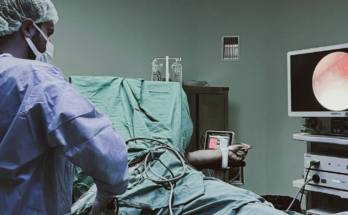Willy Diddens examines how pet care is becoming dominated by big finance.
On 21 October 2021 the World Economic Forum, in an article on its internet site, honoured an unexpected body for its contribution to human wellbeing, for being a social catalyst and a friend to many. It paid tribute to pets, in the context of the Covid lockdown. For a great deal of people it is self-evident that a dog or cat can be a companion for the elderly and lonely, a loyal friend for children and a counterpoint to life’s trials for anyone.
The traditional veterinarian reflects this special position. Like a general practitioner, he/she is embedded in the community and situated relatively close to his/her clients. But the figure of the traditional veterinarian is rapidly eroding. An almost unlimited number of treatments, originating in human medicine, have become applicable in the veterinary world.
As pet owners set higher standards, veterinarians have to adapt. Specialisation is necessary, the higher investment in equipment calls for the application of economies of scale.
As pet owners set higher standards, veterinarians have to adapt. Specialisation is necessary, the higher investment in equipment calls for the application of economies of scale. It leads necessarily to cooperation and integration of medical services at a more regional level and to veterinary practice consolidation. These developments go hand-in-hand with the need of finance for expensive equipment and with increased competition in a world of professionals not primarily known for their entrepreneurial skills.
The appearance of investment funds in the veterinary sector can be considered a natural phenomenon as a consequence of endogenous developments. However, the speed and magnitude of the consolidation process can only be explained by exogenous factors. They coincide with the overabundance of capital after the financial crisis of 2008.
It may be a coincidence, but the two leading multinational veterinary enterprises on the European continent began life in 2011 and have since grown to their current positions. Independent Vetcare (IVC) was created in a merger of three large independent veterinary practices in the south west of England. It was meant to be a vet-led group allowing local practices to retain their independence, while centralising administration. At the same time a Scandinavian counterpart, AniCura, was born having similar strategic aims. In 2017 IVC was taken over by the Swedish equity fund EQT and merged with the Swedish firm, Evidensia to form IVC Evidensia. In 2018 AniCura was taken over by Mars Petcare, a branch of the Mars multinational.
Both examples show the dynamics of what is now often called the “veterinary industry”. A vet-led integration, following medical and social developments and profiting from economies of scale, has been taken over and accelerated by the financial industry. Within less than a decade, veterinary multinationals have conquered 30-60% of the national markets in Europe and North America. These percentages are likely to rise as these conglomerates follow an aggressive strategy of takeovers, approaching independent veterinarians with time-honoured offers they cannot refuse. Generally two options are given: either sell the practice or integrate it with the conglomerate while maintaining its legal independence.
Mars Petcare and Nestlé Purina Petcare, are the world leaders in the pet food industry. In this way they take control of a highly captive and profitable market, the one of the wellbeing of our “best friends”.
Moreover, another integrative process is taking place. Whereas AniCura has directly been taken over by Mars, Nestlé has become an important shareholder in EQT, the owner of IVC Evidensia. Mars and Nestlé, through their companies Mars Petcare and Nestlé Purina Petcare, are the world leaders in the pet food industry. In this way they take control of a highly captive and profitable market, for the wellbeing of our “best friends”. This grip is further strengthened by investments in research and development and training as well as academic education.
What is the impact of these developments in daily practice? For veterinarians, some advantages are clear: part-time employment is easier; night and weekend shifts can be outsourced; and there are more possibilities for training and specialisation. However, the impression that animal welfare is subordinated to shareholder value prevails. It becomes most visible in ever-increasing tariffs that cannot be attributed solely to investments in advanced medical equipment. Financial key-performance indicators have emerged and make it easy for the management to compare the results of the different branches and increase the pressure on the weak performers.
The pressure on individual veterinarians is mostly indirect, as they are generally highly-motivated individuals upholding strong ethical codes. Shorter medical consultations and restricted choice of medication are the most visible measures. But there is the intrinsic pressure to increase the added-value of medical interventions, from more refined diagnoses through CT-scans, more sophisticated operations and other interventions prolonging or improving the quality of life of the pets. The management also tends to suggest making the care for individual pets more permanent by trying to plan follow-up consultations. On the other hand, veterinarians also experience the pressure of clients who, due to the rising costs, try to avoid necessary measures for the proper treatment of their pets.
The essential difference is that human beings are at the core of policy-making and protection by legislators, whereas animals have no individual rights.
Can these trends be influenced or are they irreversible? They bear some resemblance to developments in human healthcare. The essential difference is that human beings are at the core of policy-making and protection by legislators, whereas animals have no individual rights. Furthermore, the market for animal healthcare was not subject to strong competition and therefore specific market regulation is only rudimentary. And tighter regulation is probably not the way forward, as it is difficult to enforce when dealing with multinationals equipped with sophisticated legal teams.
More promising and fundamental is the approach of setting the precondition that veterinary practices must be controlled by veterinarians, as it is the case in France. A French court ruled recently in favour of the country’s veterinary regulator, the Order of Veterinarians, which is moving to deregister practices controlled by large corporations on the grounds that their ownership structures undermine practitioners’ independence.



